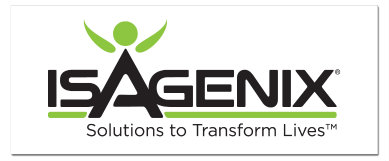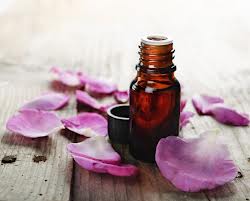Nature’s Sights And Sounds – But Not Cityscapes And Noise – Ease Spinal Pain During Bone Marrow Extractions
![]()
As the song says, a spoonful of sugar helps the medicine go down, and now researchers at Johns Hopkins have found that the sights and sounds of chirping birds, ribbiting frogs and water trickling downstream can ease the substantial pain of bone marrow extraction in one of five people who must endure it.
In a report published in the September edition of the Journal of Complementary and Alternative Medicine, the Johns Hopkins team also found that busy cityscapes and sounds of honking cars in traffic, or the absence of other distractions offered no significant relief from the pain experienced by cancer patients undergoing bone marrow aspiration.
And they found that even the soothing distractions of the natural world only worked when the clinician performing the complex procedure was highly skilled in minimizing pain.
Bone marrow aspirations — in which a six-inch long needle, one-eighth an inch wide, is inserted into the base of the spine for as long as 10 minutes — are often needed repeatedly to diagnosis and monitor anemia and leukemia, and as part of bone marrow transplant therapy. The researchers say an estimated 40 percent of cancer patients rank bone marrow aspiration pain as moderate to severe.
Study lead investigator, pulmonologist and critical care expert Noah Lechtzin, M.D., M.H.S., says scenes from the natural world painted on bed curtains, along with audio-taped sounds of outdoor life, are fairly simple distractions that offer a safe, inexpensive way to reduce the serious discomfort felt by patients for what is a widely practiced, life-saving procedure.
“Our study results also show that a physician’s skill in pain management is key to making these distraction techniques work effectively,” says Lechtzin, an assistant professor at the Johns Hopkins University School of Medicine.
Lechtzin’s previous research with senior study investigator Gregory Diette, M.D., M.H.S., also a Hopkins pulmonologist and critical care expert, showed that the same natural distractions could produce as much as a fivefold drop in pain experienced during bronchoscopy, another common, and throat-irritating, procedure.
That 2003 analysis led Lechtzin and Diette to see if the technique worked in other procedures in which patient discomfort was a leading complication. Bone marrow aspirations use only a mild, local anesthetic, so patients would be awake and alert to offer feedback on their degree of pain.
In the new study, 120 men and women, all patients about to undergo bone marrow aspirations at The Johns Hopkins Hospital, were randomly assigned to have their procedure either without distraction therapy, as it is commonly performed in most hospitals, with plain-colored curtains and no background sounds, or to have their procedure performed in a bed surrounded by curtains with painted murals of forests and mountains or contrasting scenes of downtown buildings and cars. Sounds were matched to the scenery, and played by audiotape in the background, with patients controlling the volume.
Immediately before and after their procedure, study participants graded their severity of pain according to the Hopkins Pain Rating Instrument, a scientifically proven, self-measurement scale in which patients mark a paper line scale measuring 10 centimeters to show exactly how much pain they feel. Markings close to 0 indicate no pain, and those close to 10 connote the worst pain imaginable. Recordings beyond the 4 centimeter mark are designated as moderate to severe pain.Results confirmed that, overall, bone marrow aspiration is a painful process, with an average score of 4.8 on the pain scale and one-quarter of study participants having reported severe pain.
When researchers broke apart the analyses among each of the 10 clinicians performing the aspirations, they found among the two physicians with the lowest pain scores that study participants exposed to the nature cues had an average pain score of 3.9, while those who were not distracted in any way had an average pain score of 5.7. Other factors, including pre-existing health conditions, anxiety levels and how much of the local anesthetic lidocaine was needed during the procedure, were also monitored in the study, but did not affect the pain results.
“The bottom line here is that finding alternatives, such as these fairly inexpensive nature scenes, to reduce or better control a patient’s pain during common medical procedures is both needed and important, especially if we are trying to keep health care costs down and improve patients’ satisfaction with their care,” says Diette, an associate professor at Johns Hopkins.
Each screen and audiotape cost less than $300, he notes, pointing out that alternatives, such as hypnosis or increased use of expensive analgesics and sedatives, carries with it added risk of complications, greater need for patient monitoring and more time for recovery – all of which add to the cost of care. He says it is also easy to forget the indirect costs associated with sedation, such as the time involved by family and friends in transporting patients who are not safe to drive after they wake.
Diette says the team’s next focus on training clinicians in best practices for pain control is to expand the use of nature scenery and sounds in clinics at Hopkins, and plan a multicenter trial to replicate and strengthen the technique.
Funding for the study was provided by the National Center for Complementary and Alternative Medicine, a member of the National Institutes of Health, and by the Johns Hopkins Center for Complementary and Alternative Medicine. All nature and cityscape screens, plus accompanying audiotape, were manufactured by Healing Environments International, of Elkins Park, Pa.
Other researchers involved in this study, conducted solely at Hopkins from August 2004 to June 2005, were Anne Busse, M.Ed., B.A.; Michael Smith, Ph.D.; Stuart Grossman, M.D.; and Suzanne Nesbitt, Pharm.D.
Source: Johns Hopkins Medicine
Copyright: Medical News Today
Not to be reproduced without permission of Medical News Today
Note: Any medical information published on this website is not intended as a substitute for informed medical advice and you should not take any action before consulting with a health care professional. For more information, please read our terms and conditions.
All opinions are moderated before being added.




